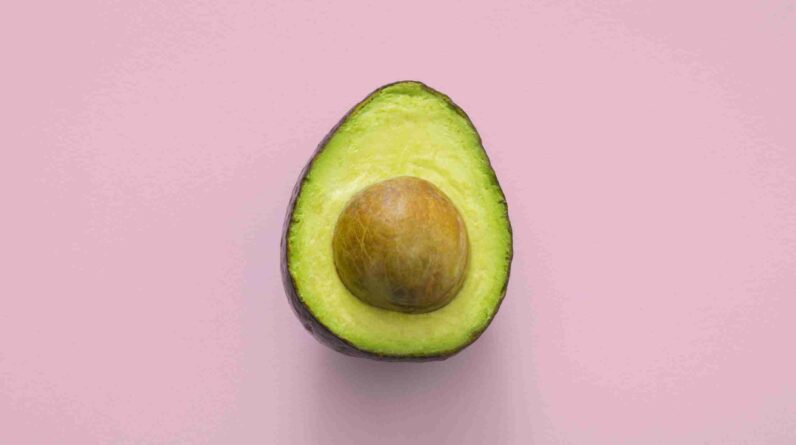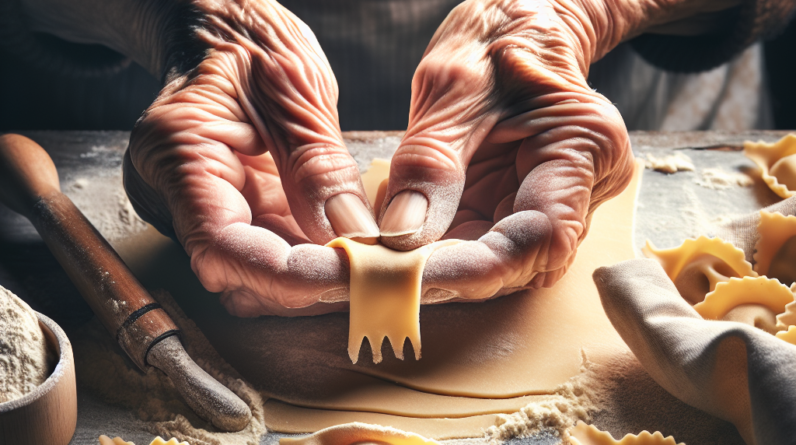Looking to indulge in a delectable spread of Italian cured meats and cheeses? Look no further! In this article, we will guide you through the art of creating an impressive charcuterie board that is sure to wow your guests. From choosing the perfect selection of meats and cheeses to arranging them in an enticing display, we’ve got you covered. Whether you’re a seasoned charcuterie connoisseur or a novice looking to impress, we’ll provide you with all the tips and tricks you need to create a mouthwatering masterpiece. So, let’s roll up our sleeves and get ready to embark on a culinary adventure that will leave everyone craving for more! Creating a charcuterie board with Italian cured meats and cheeses is a delightful way to showcase the rich flavors of Italy. Whether you’re hosting a gathering or simply indulging in a cozy night at home, a well-curated charcuterie board can be a centerpiece that delights both the eyes and the taste buds. With a variety of meats, cheeses, and accompaniments to choose from, it’s important to have a well-thought-out plan in place. In this article, we will guide you through the process of choosing meats, selecting cheeses, picking accompaniments, arranging the board, serving tips, wine pairing suggestions, adding a personal touch, exploring regional variations, ensuring safety and storage, and answering some frequently asked questions.
Choosing the Meats
Research Different Types of Italian Cured Meats
To create an authentic Italian charcuterie board, it’s important to familiarize yourself with the different types of Italian cured meats. Italy is renowned for its cured meats, such as prosciutto, salami, pancetta, and bresaola. Each type of meat has its own unique flavor profile and texture. Take the time to research and understand the characteristics of each meat so that you can make informed decisions when selecting them for your board.
Select a Variety of Meats for the Board
When selecting meats for your charcuterie board, aim for a variety of flavors and textures. Consider including a mix of thinly sliced prosciutto, spicy salami, and rich bresaola. This variety will not only provide different taste experiences but also add visual interest to your board.
Consider the Flavor Profiles of the Meats
As you choose the meats for your charcuterie board, it’s important to consider their flavor profiles. Some meats, like prosciutto, have a delicate and salty flavor, while others, like salami, can be spicier. Think about how these flavors will complement each other and the cheeses you plan to include. The goal is to create a harmonious balance of flavors on your board.
Selecting the Cheeses
Explore Different Types of Italian Cheeses
Italian cheeses are incredibly diverse and offer a wide range of flavors and textures. Mozzarella, Parmigiano-Reggiano, Gorgonzola, and Pecorino Romano are just a few examples of the delicious cheeses Italy has to offer. Explore the different types of Italian cheeses and consider their individual characteristics when making your selection.
Choose a Mix of Soft and Hard Cheeses
To create a well-rounded charcuterie board, include a mix of soft and hard cheeses. Soft cheeses, such as fresh mozzarella or creamy Gorgonzola, can provide a luscious and smooth texture, while hard cheeses like Parmigiano-Reggiano or Pecorino Romano offer a sharper and more robust flavor. The combination of these different textures and flavors will add depth to your board.
Consider Complementary Flavors with the Meats
As you select your cheeses, keep in mind the flavors of the meats you have chosen. Consider how the flavors of the cheeses will complement or contrast with the meats. For example, the creaminess of mozzarella can balance the saltiness of prosciutto, while the sharpness of Parmigiano-Reggiano can provide a nice contrast to the rich flavors of bresaola. Experiment with different combinations of meats and cheeses to find the perfect pairing.

Accompaniments for the Board
Pick the Right Bread or Crackers
Bread or crackers are essential components of a charcuterie board as they provide a vessel for enjoying the meats and cheeses. Choose a high-quality baguette or artisanal crackers that can complement the flavors of the Italian meats and cheeses. Sourdough or crusty Italian bread can be a great choice, as they offer a satisfying texture and neutral taste that allows the meat and cheese to shine.
Include Dips or Spreads
To add additional flavor and texture to your charcuterie board, consider including dips or spreads. Classic Italian spreads like pesto, tapenade, or sun-dried tomato spread can enhance the taste of the meats and cheeses. These spreads can be placed in small bowls or ramekins on the board, making them easily accessible for guests to enjoy.
Add Fresh and Dried Fruits
Fresh and dried fruits provide a refreshing and sweet contrast to the savory meats and cheeses. Grapes, figs, and berries are excellent choices for adding a burst of sweetness to your board. Dried fruits like apricots or cranberries can also add a chewy texture and concentrated flavor. Arrange them strategically around the board to create visual interest.
Consider Nuts and Olives
Nuts and olives are fantastic accompaniments that bring a delightful crunch and savory element to your charcuterie board. Marinated olives, such as Kalamata or Castelvetrano, can provide a briny and tangy contrast to the richness of the meats and cheeses. Roasted almonds, walnuts, or pistachios add a nutty flavor and satisfying crunch. Scatter them throughout the board for guests to enjoy with their meat and cheese combinations.
Include Condiments and Pickles
Condiments and pickles can elevate the flavors of the meats and add a touch of acidity and tang. Mustard, honey, or balsamic glaze can be drizzled over the meats and cheeses to enhance their taste profiles. Additionally, pickled vegetables like cornichons or giardiniera can provide a zesty and tangy element. Place these condiments and pickles in small bowls or ramekins alongside the meats and cheeses for easy access.
Arranging the Board
Start with the Larger Items
When arranging your charcuterie board, it’s essential to start with the larger items first. Place your cheeses and other substantial items on the board before adding the smaller components. This helps create a solid foundation and ensures that the focus is evenly distributed throughout the board.
Arrange the Meats Artistically
After placing the larger items, it’s time to arrange the meats. Place the thinly sliced meats, such as prosciutto or bresaola, in loose folds or delicate rolls. This not only adds visual interest but also allows for easy grabbing by guests. Layer salami slices or arrange them in an overlapping pattern to create dimension. Be creative and position the meats in a way that showcases their unique textures and colors.
Place the Cheeses Strategically
Once the meats are arranged, it’s time to position the cheeses on the board. Place them strategically, allowing each cheese to have its own space. Consider cutting hard cheeses into bite-sized cubes or wedges for easy serving. Soft cheeses can be spread or arranged in small bowls. Distribute the cheeses evenly across the board to ensure that guests have access to a variety of flavors.
Add Accompaniments to Fill Empty Spaces
After placing the meats and cheeses, fill any empty spaces with the accompaniments you have chosen. Scatter the bread or crackers around the board, tucking them between the meats and cheeses or placing them in a separate section. Arrange the fruits, nuts, olives, and pickles in small clusters or along the edges of the board. This not only adds visual appeal but also makes it easier for guests to find their desired combinations.
Consider Color and Texture in the Arrangement
When arranging your charcuterie board, consider the colors and textures of the different components. Create a visually appealing display by balancing contrasting colors and textures. For example, pair dark salami slices with bright green grapes or place creamy white cheeses next to vibrant red tomatoes. This attention to detail will enhance the overall aesthetic of your charcuterie board.

Tips for Serving
Serve at Room Temperature
To fully appreciate the flavors and textures of the meats and cheeses, it’s crucial to serve them at room temperature. Allow the charcuterie board to sit out for at least 30 minutes before serving to ensure that the meats and cheeses reach their optimal taste and texture. This also allows the flavors to develop and meld together.
Provide Cheese Knives and Spreading Utensils
To make it easy for guests to enjoy the different cheeses on your board, provide cheese knives and spreading utensils. Different cheeses may require different utensils, such as a knife for hard cheeses or a spreader for soft cheeses. Place these utensils within reach, near each cheese or in a separate designated area on the board.
Serve the Meats and Cheeses in Slices
To make it easier for guests to assemble their own bites, slice the meats and cheeses in advance. Thinly sliced meats are much more manageable to grab and arrange onto crackers or bread. Cheese slices can be arranged neatly or crumbled into bite-sized pieces. This allows guests to customize their own combinations and enjoy the meats and cheeses in a way that suits their preferences.
Label the Meats and Cheeses
To guide guests through the flavors and characteristics of the meats and cheeses, consider labeling each item on the board. Place small tags or signs next to each component, indicating its name and any relevant information. This not only adds a professional touch but also helps guests identify and appreciate the different flavors and varieties.
Allow Guests to Assemble Their Own Bites
One of the joys of a charcuterie board is the opportunity for guests to create their own personalized bites. Encourage your guests to experiment with different combinations of meats, cheeses, and accompaniments. Provide small plates and napkins, along with tongs or small utensils, to make it easy for guests to assemble their masterpieces.
Pairing with Wine
Choose Red Wines for Bold Flavors
Italian cured meats and cheeses pair exceptionally well with red wines. Opt for full-bodied red wines like Chianti, Barolo, or Brunello di Montalcino to complement the bold flavors of the meats and cheeses. These wines typically have enough depth and tannins to stand up to the richness and saltiness of the charcuterie board.
Opt for White Wines for Milder Flavors
If you prefer a lighter and more refreshing pairing, white wines can also be a great choice. Choose crisp white wines like Pinot Grigio, Vermentino, or Soave that can balance the flavors of the meats and cheeses without overpowering them. These wines offer a vibrant acidity and subtle fruitiness that can complement the milder flavors of the charcuterie.
Consider Sparkling Wines for Versatility
Sparkling wines, such as Prosecco or Franciacorta, are incredibly versatile and can enhance the flavors of both the meats and cheeses. Their effervescence and lively acidity can cleanse the palate and provide a refreshing backdrop for the rich and savory components of the charcuterie board. Sparkling wines also add a celebratory touch to any gathering.
Experiment with Sweet Dessert Wines
For those with a sweet tooth, consider pairing your charcuterie board with sweet dessert wines. Italian classics like Moscato d’Asti or Vin Santo offer a delightful contrast to the salty and savory meats and cheeses. The natural sweetness of these wines can complement the flavors of dried fruits, nuts, and other sweet accompaniments on the board.

Adding a Personal Touch
Consider the Occasion or Theme
When creating a charcuterie board, consider the occasion or theme you’re celebrating. Whether it’s a casual gathering, a romantic dinner, or a festive holiday party, tailor your board to suit the mood. You can add small decorative elements or themed accents that reflect the occasion or season, such as miniature flags for a patriotic event or fresh sprigs of rosemary for a holiday gathering.
Incorporate Decorative Elements
To elevate the visual appeal of your charcuterie board, incorporate decorative elements that add charm and personality. Fresh herbs, edible flowers, or small bunches of grapes can be strategically placed around the board to enhance its aesthetics. Be mindful not to overcrowd the board or overpower the flavors of the meats and cheeses.
Use Unique Serving Platters or Boards
Choosing unique serving platters or boards can be a delightful way to add a personal touch to your charcuterie presentation. Whether it’s a rustic wooden board, a vintage tray, or a colorful ceramic platter, select a vessel that complements the overall theme or style of your gathering. The serving platter or board can be a visual extension of your creativity and passion for creating a beautiful and delicious spread.
Include Special Homemade Accompaniments
To infuse your charcuterie board with a personal touch, consider including special homemade accompaniments. Homemade jams, chutneys, or flavored butters can elevate the flavor experience and showcase your culinary skills. These unique additions can provide a personal connection and a conversation starter for guests.
Exploring Regional Variations
Discover the Charcuterie Traditions of Different Italian Regions
Italy is a country rich in culinary traditions, and each region has its own unique charcuterie specialties. Take the opportunity to explore the charcuterie traditions of different Italian regions and incorporate their delicacies into your board. For example, Emilia-Romagna is known for its mortadella, while Calabria offers spicy ‘nduja. By incorporating regional variations, you can create a charcuterie board that showcases the diversity of Italian cuisine.
Experiment with Local Italian Delicacies
In addition to traditional Italian meats and cheeses, consider exploring local Italian delicacies for your charcuterie board. Look for artisanal producers or specialty shops that offer unique and lesser-known cured meats and cheeses. Sampling these local delicacies can add an element of surprise and intrigue to your board, allowing you and your guests to discover new flavors and textures.
Incorporate Non-Traditional Italian Meats and Cheeses
While staying true to the essence of Italian charcuterie, don’t be afraid to incorporate non-traditional meats and cheeses into your board. Italian cuisine embraces innovation and fusion, and you can take inspiration from international flavors. Consider including cured meats and cheeses from other countries that pair well with the Italian offerings. This fusion can create an exciting and unexpected charcuterie experience.
Safety and Storage
Store the Meats and Cheeses Properly
To ensure the freshness and quality of the meats and cheeses, it’s vital to store them properly. Cured meats should be kept in a cool and dry place, preferably wrapped in butcher paper or wax paper to allow airflow. Cheeses should be stored in the refrigerator but taken out at least an hour before serving to reach room temperature. Storing the meats and cheeses correctly will help maintain their flavors and textures.
Follow Food Safety Guidelines
Food safety should always be a priority when preparing charcuterie boards. Make sure to handle the meats and cheeses with clean hands and sanitize any equipment or surfaces used in the preparation process. Avoid cross-contamination by using separate cutting boards and utensils for raw meats. If any of the meats or cheeses appear spoiled or have an off smell, discard them immediately.
Discard Perished Items
Although cured meats and hard cheeses have a longer shelf life, it’s important to regularly check for signs of spoilage. Mold on hard cheeses can be trimmed off, but if it appears on softer cheeses or meats, it’s best to discard them entirely. Do not consume any meats or cheeses that have an unusual texture, strong odor, or any signs of deterioration.
Handle Raw Meats with Care
If you choose to incorporate raw meats, such as carpaccio or tartare, on your charcuterie board, be sure to handle them with extra care. Use only the freshest and highest-quality raw meats from a trusted source. Keep the raw meats refrigerated until just before serving, and make sure to follow proper food safety guidelines when handling and serving them.
Frequently Asked Questions
What is the Difference Between Prosciutto and Pancetta?
Prosciutto and pancetta are both Italian cured meats, but they have distinct differences. Prosciutto is made from the hind leg of a pig and is typically air-dried and aged for an extended period. It has a delicate and slightly sweet flavor. Pancetta, on the other hand, is made from pork belly and is usually cured with salt and spices like black pepper and garlic. It is often used in cooking and has a more intense and savory flavor.
Can I Freeze Italian Cured Meats and Cheeses?
While it’s generally not recommended to freeze cured meats, some hard cheeses can be frozen for short periods. Freezing can affect the texture and flavors of the cheeses, so it’s best to consume them fresh. If you have leftover meats or cheeses, it’s better to store them properly in the refrigerator and enjoy them within a few days.
How Long Can I Keep Leftover Meats and Cheeses?
The shelf life of cured meats and cheeses varies depending on their types and conditions. Hard cheeses like Parmigiano-Reggiano or Pecorino Romano can last for several weeks if properly stored in the refrigerator. Cured meats can generally be enjoyed for a few weeks, but it’s important to check for any signs of spoilage. As a general rule, always use your senses of sight and smell to determine if a meat or cheese is still safe to consume.
What Other Accompaniments Can I Include?
The possibilities for accompaniments on your charcuterie board are endless. In addition to the suggestions mentioned earlier, you can consider including marinated artichoke hearts, roasted red peppers, or even a selection of Italian olives. Fresh herbs like basil or rosemary can add aromatic flavors, while artisanal honey or fruit preserves can provide a hint of sweetness. Get creative and tailor the accompaniments to your preferences and the flavors of the meats and cheeses you have selected.
Creating a charcuterie board with Italian cured meats and cheeses is a delightful and delicious adventure. With careful consideration given to the types of meats, cheeses, accompaniments, and wine pairings, you can create a charcuterie board that is both visually stunning and bursting with exquisite flavors. By incorporating personal touches, exploring regional variations, and prioritizing safety and storage, you can ensure that your charcuterie board becomes a memorable culinary experience for you and your guests. So gather your ingredients, let your creativity flow, and enjoy the art of Italian charcuterie.










